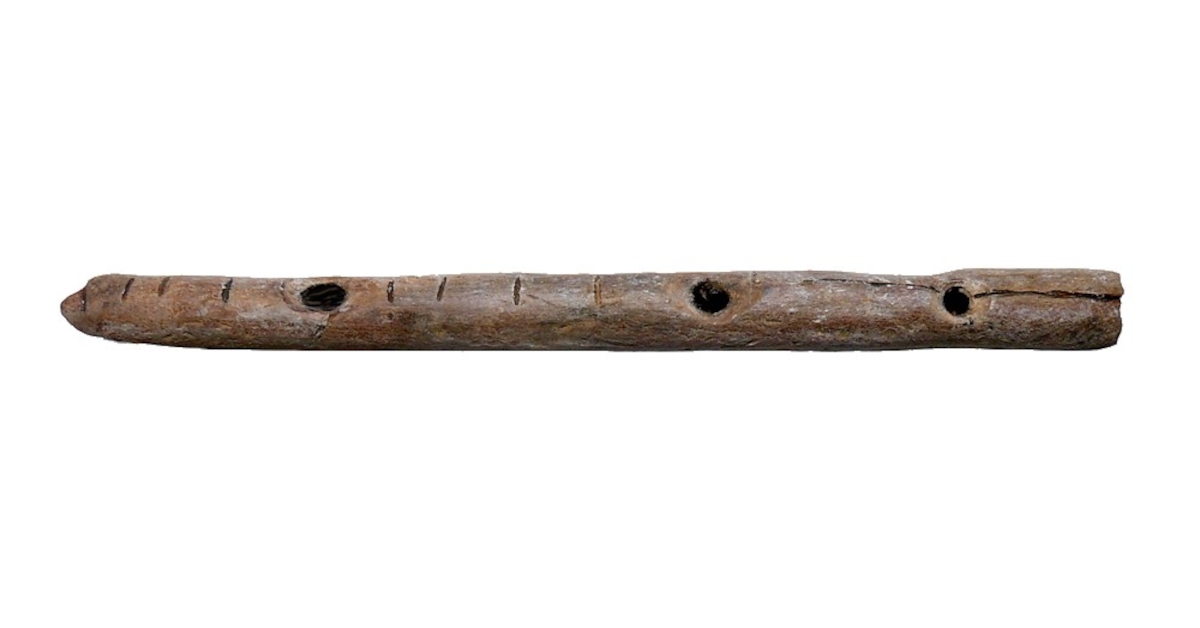The oldest musical instrument in the world.

Music has been an integral part of human civilization, serving as a universal language that transcends borders and cultures. As we explore the origins of music, we inevitably encounter the question: What is the oldest musical instrument in the world?
There are several contestants for the title but as for definitive evidence, we know that as far back as approximately 40,000 years ago, the captivating sounds of music could be heard echoing through the caves of southwestern Germany. Archaeological excavations have revealed a collection of bird bone flutes here, crafted with remarkable precision and care.
The remarkable collection of flutes originating from the European Upper Paleolithic era were uncovered during regular archaeological excavations conducted in the caves of the Swabian Alb region in Germany. These instruments, which have been subject to independent dating and testing by laboratories in both England and Germany, are confirmed to be genuine artifacts from the Aurignacian archaeological culture. Crafted between 43,000 and 35,000 years ago from bone and ivory, they hold the distinction of being the oldest known musical instruments, serving as undeniable proof of the existence of prehistoric music.

In 2006, archaeologists made a significant discovery in Germany’s Swabian Alb region when they unearthed the Hohle Fels flute from the Hohle Fels cave. Crafted approximately 35,000 years ago, this remarkable flute is constructed from the radius bone of a vulture and features five finger holes.
Prior to the Hohle Fels discovery, researchers had already uncovered two flutes in the nearby Geissenklösterle cave. These flutes, made from mute swan bone and woolly mammoth ivory, were initially thought to be younger than the Hohle Fels one, but in 2012, a meticulous carbon dating examination challenged the previous understanding of the flutes’ chronology. The Geissenklösterle cave flutes were re-evaluated and determined to be between 42,000 and 43,000 years old, suggesting they may predate the Hohle Fels flute and are the oldest musical instruments discovered so far.

The caves housing the ancient flutes also contain the earliest instances of figurative art discovered to date. This synchronicity between music and sculpture as forms of artistic expression highlights their simultaneous development among the earliest humans in Europe, indicating the region’s significance in nurturing a diverse range of cultural advancements. The ritualistic nature of the music played on these flutes likely served not only recreational and religious purposes but also potentially facilitated the maintenance of extensive social networks, playing a crucial role in maintaining social bonds within larger groups of humans. This, in turn, may have facilitated the expansion of the species both in terms of population and geographical range, granting an evolutionary advantage to early humans over their Neanderthal counterparts.
Talking of Neanderthals, an artifact thought to have created by them has also been proposed as a contender for the title of the oldest musical instrument discovered, although this claim has faced considerable debate. The Divje Babe flute, discovered in Slovenia in 1995, is crafted from a cave bear femur and is pierced with spaced holes. According to the ESR dating technique, its estimated age ranges from 50,000 to 60,000 years before present.

The individual who discovered the flute proposed that the holes were deliberately created by humans and that there may have been four holes originally before the item was damaged. However, other scientists have debated this, suggesting that the holes were formed through animal chewing.
Nevertheless, the website of the National Museum of Slovenia claims that archaeologists utilized practical experiments using replicas of the tools found in the cave to elucidate the process by which Neanderthals created the holes in the flute. They say that a pointed stone tool was used to carve a small hollow in the bone, which was then pierced with a bone punch, resulting in the formation of a hole. Through diverse analyses and experiments, it was demonstrated that the holes could not be attributed to animal bites or mere coincidence.

The controversy surrounding the Divje Babe flute highlights the complexity of archaeological interpretation, as different viewpoints emerge from the scientific community. Further research and analysis will likely continue to shape our understanding of this intriguing artifact and its role in the evolution of early musical expression. But for now, the scientific consensus regards the flutes found in the Swabian Alb caves in Germany to be the world’s oldest instruments discovered so far.
Sources: 1, 2, 3
